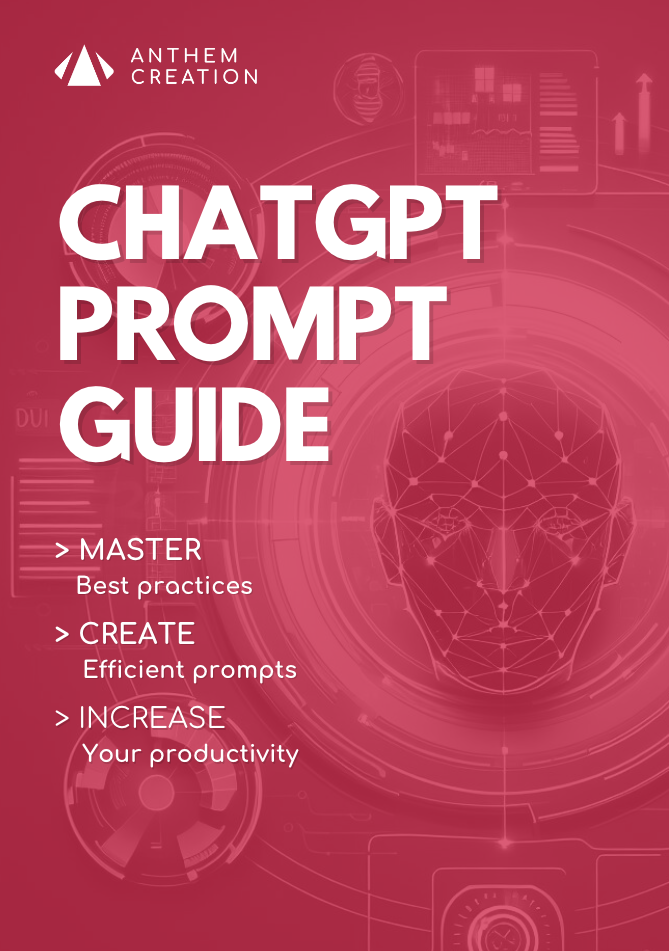Recently, OpenAI unveiled the o3-mini model , a more compact, fast and economical version of its reasoning tools. Designed to meet the demands of STEM (science, technology, engineering and mathematics) fields, this model is positioned as a real revolution for digital professionals, particularly in web development.
Listen to the AI podcast :
What is the o3-mini model?
The o3-mini model is the successor to the o1-mini model, benefiting from an optimized architecture that significantly improves reasoning performance and the management of complex tasks thanks to a deliberative alignment that limits the risks associated with malicious or inappropriate content.

While it doesn’t rival multimodal models like GPT-4o or Gemini 2.0 in some areas, it excels in tasks requiring precise, rapid reasoning.
In summary, o3-mini pushes the boundaries of development with powerful, affordable and adaptable AI, paving the way for wider adoption of intelligent solutions across diverse sectors while reducing traditional technology barriers.
Among its innovations, we note:
Technical and architectural improvements
- A architecture redesigned to offer reduced latency, with responses up to 24% faster than o1-mini.
- Refined reasoning algorithms, guaranteeing greater precision for mathematical calculations, scientific analysis and coding.
Accessibility and flexibility
- Available both via ChatGPT and via an API, accessible now for free users (via the “Reasoning” option) and optimized for ChatGPT Plus, Team and Pro subscribers.
- The ability to choose between three levels of reasoning effort (low, medium, high)allows the model to be adapted to task complexity.
Economic optimization
- Significantly reduced costs per token compared to GPT-4, without compromising performance quality.
Comparisons and benchmarks
The tests and benchmarks carried out show notable numerical advantages:
Coding performance
- Compared to o1-mini, o3-mini generates code 24% faster and handles complex tasks in competitive programming.
- On SWE-bench-checked, it stands out as the best-performing model for software engineering.
Effective reasoning
- In competitive mathematics (e.g. AIME 2024), o3-mini outperforms its predecessors thanks to a high level of reasoning effort.
- In scientific and PhD-level contexts, it offers results comparable to heavier models while being more agile.
These benchmarks, complemented by technical case studies, demonstrate that architecture improvement and model optimization translate into time savings and error reduction, with a positive impact on overall productivity.
Applications in coding and web development
Thanks to its advanced capabilities, o3-mini proves particularly useful in several areas of web development:
Fast code generation
- Able to produce code in HTML, CSS, Python, and many other languages, it facilitates the creation of applications, video games or custom websites.
- Example: A developer can create and iterate on a Snake game in a matter of minutes, adding or modifying features (for example, adding a scoring system).
Improving and maintaining existing code
- The template understands and modifies existing code bases to add new functionality or correct errors.
Integration into development environments
- Compatible with tools such as Visual Studio Code (via specific extensions), it integrates seamlessly into developers’ workflows, improving the management of local and collaborative projects.
Automating repetitive tasks
- By automating common tasks, o3-mini allows developers to focus on more creative and complex aspects of their projects.
The o3-mini model marks a major advance in the development of artificial intelligence by combining efficiency, accessibility and reasoning power.
Thanks to its fast performance, low operational cost and ability to adapt to different levels of complexity, it democratizes access to AI for a wide range of users, from small businesses to independent developers.
Adjustable reasoning capabilities, combined with compatibility with external tools and structured formats such as JSON, make it an ideal choice for a variety of applications, from complex programming and mathematics to workflow automation.
In addition, its small energy footprint and ability to run on standard hardware promote sustainable adoption, making AI accessible without the need for costly infrastructure.
Comparative table of the main models
| Model | Highlights | |||
|---|---|---|---|---|
| o3-mini | – Advanced reasoning – Low cost – Low latency | – STEM (math, science) – Web coding and development | – 24% faster than o1-mini – Initial response time reduced by 2,5 s | – Adjustable reasoning effort parameter (low, medium, high) – Real-time integration with external tools – Architecture optimized for complex technical tasks |
| o1 | – Complex reasoning – Enhanced alignment with safety protocols | – Advanced mathematics (83% at IMO) – Competitive programming | -. Solid performance on long tasks thanks to extended contextual window (128,000 tokens) – Overall slower response time than o3-mini | – Chain-of-thought reasoning – Reinforcement learning with human feedback |
| GPT-4o | – Multimodal model (text, audio, image) – Real-time interactions | – Multimodal generation and analysis (text, voice, vision) – Real-time translation | – Fast audio response (~320 ms) – Extended contextual memory | – Ability to generate responses in multiple multimodal formats |
| Claude 3.5 | – Improved intelligence and speed over Claude 3 | – Complex mathematical reasoning – Advanced coding | – Reduced processing time while maintaining cost efficiency | – Designed for businesses requiring fast, intelligent solutions |
| Gemini 2.0 | – Advanced multimodal model with native output (text, images, audio) | – Multimodal analysis (images, video, audio) – Content generation | – Twice as fast as Gemini 1.5 Pro | – Generation of native images mixed with text – Multilingual TTS controllable |
FAQ
1. What sets o3-mini apart from other AI models?
o3-mini stands out for its optimized architecture that enables responses up to 24% faster than o1-mini, while offering excellent cost-effectiveness and reasoning performance suitable for STEM fields.
2. What are the main technical improvements over o1-mini?
The o3-mini model benefits from a redesigned architecture, refined reasoning algorithms and options for configuring the reasoning level (low, medium, high), enabling it to be adapted to the complexity of the tasks at hand.
3. How does o3-mini improve web development?
It allows you to generate code in a variety of languages quickly, modify and enhance existing code bases, and automate repetitive tasks, making it easier to create and maintain websites and applications.
4. What are the current limitations of the model?
o3-mini does not support visual recognition, some advanced features remain reserved for paying users via the API, and human supervision is required to guarantee the quality and relevance of results.
5. What future prospects can we expect for o3-mini?
OpenAI is working on the ongoing optimization of the architecture, in particular to improve image processing and the management of complex interactions. Growing industrial adoption and feedback from technical case studies should also enrich its functionalities and strengthen its economic impact.
AI NEWSLETTER
Stay on top of AI with our Newsletter
Every month, AI news and our latest articles, delivered straight to your inbox.

CHATGPT prompt guide (EDITION 2024)
Download our free PDF guide to crafting effective prompts with ChatGPT.
Designed for beginners, it provides you with the knowledge needed to structure your prompts and boost your productivity
With this ebook, you will:
✔ Master Best Practices
Understand how to structure your queries to get clear and precise answers.
✔ Create Effective Prompts
The rules for formulating your questions to receive the best possible responses.
✔ Boost Your Productivity
Simplify your daily tasks by leveraging ChatGPT’s features.
Similar posts
OpenAI O3 and O3 mini : Towards artificial general intelligence
OpenAI has revealed two revolutionary new artificial intelligence models, O3 and O3 mini, which mark a major turning point in the quest for general artificial intelligence (AGI). These models, with …
DeepSeek r1: The free AI model that challenges market leaders
DeepSeek R1, a new open source LLM developed in China, is attracting unprecedented interest. This revolutionary model not only technically rivals giants such as GPT-4 or Claude 3.5, it offers …
OpenAI Model O1 Pro: Performance, reliability and cost
OpenAI’s O1 Pro model, which carries both the promise of greater computing power and extended reflection, sets new standards for reliability and speed. More power, but with a subscription cost …


